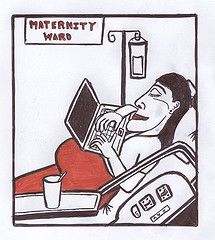
Kudos to University of Illinois sociologist and Council on Contemporary Families head Barbara Risman for putting pen to paper (or fingers to keys, more likely) for CNN.com in an insightful commentary about why it is that the so-called Mommy Wars are a distraction—and how they’re keeping us from truly addressing work-life balance in the United States.
In her short piece, Risman points out just four of the many contradictions between society’s values and actions that put the lie to the valorization of care-giving, using research from sociology and beyond to demonstrate that post-war workplaces don’t (and, quite possibly, can’t) serve millenial families. In one particularly telling example, Risman writes:
Sociologist Mirra Komarovsky pointed out these contradictions back in 1953. She argued back then that if society truly believed caretaking was an important and difficult job, nursery school teachers would rate a salary at least equal to the beginning salary of a street cleaner. Not much has changed since then. As Stephanie Coontz, a historian and co-chair of the Council on Contemporary Families, told me: “It’s time for politicians to stop competing over the women’s votes and start competing over who has the best programs to support all parents, whatever their employment status or their gender.”
She concludes with a succinct call to action: “Let’s call a truce on the fictional mommy wars and start a war on workplaces that don’t allow mommies and daddies to live full lives, on the job and at home.”








